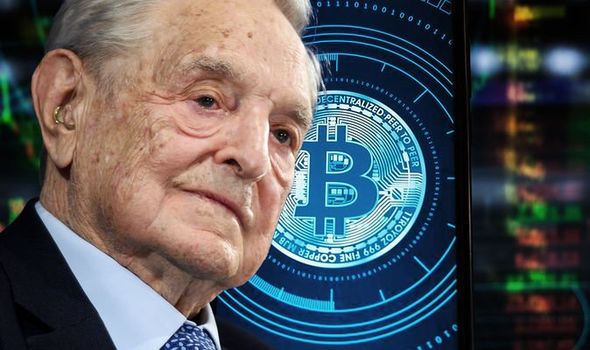
LEO
Oct 26, 2021 11:06

Bitcoin (BTC) continues to strengthen after breaking above $50,000 earlier this week and rallying Thursday to a five-month high.
Bitcoin fell 0.73% to $53811.7 by 11:50(GMT+8) on Friday.
The world's biggest cryptocurrency is up 26% in October, has risen 36% since bottoming on September 21, and has logged a 61% gain in the last three months.
Crypto bulls, like entrepreneur David Gokhshtein, believe bitcoin's run may just be beginning. In July, the founder of Gokhshtein Media and PAC Global correctly predicted that calls for bitcoin to fall to $20,000 were "wishful thinking" by bears and argued that the token, which he owns, wouldn't slide past $25,000. It bottomed at about $29,800, according to CoinMarketCap.
Gokhshtein also aptly noted in August that the $50,000 mark was technical resistance for the cryptocurrency. Bitcoin tested that level and failed earlier this year, sending it back down to the low $40,000's. But it's since rebounded to $54,000, and appears poised to test its all-time high of $64,863.
Like all market prognosticators, Gokhshtein's prediction track record is far from perfect. He called for bitcoin to advance into the $70,000s in late July, and later said the coin could soar to $85,000 — not to mention his bold $120,000 proclamation in June.
But Gokhshtein is holding firm to his bitcoin call. "I'm still going to stand on what I said last time," Gokhshtein told Insider in a recent interview. "I'll go a little step forward here. I believe bitcoin does cross $100,000. There's no doubt about it."
That milestone will come before the end of the year, Gokhshtein insists. The reason it hasn't come sooner is because of the lack of regulatory clarity from the Securities and Exchange Commission, Gokhshtein said. Fears that government regulation will kill the burgeoning cryptocurrency space are keeping both large and small investors away, he added.
Another potential headwind for bitcoin was the SEC's recent delay in making a decision on whether it will accept applications for a bitcoin exchange-traded fund (ETF). That could easily flip to a tailwind if a bitcoin ETF is approved. But Gokhshtein made it clear that the bitcoin space doesn't depend on an ETF, even if it could help draw in a new crowd of investors.
"This space doesn't depend on an ETF — it would be nice, don't get me wrong," Gokhshtein said. "Ultimately, we know where bitcoin's headed. When it gets there, nobody knows."
Broad investor base Bitcoin enjoys does provide investors with benefits. This is perhaps the easiest cryptocurrency to trade or find on any given exchange. Indeed, Bitcoin is generally viewed as the "gold standard" among many investors – we'll get to that in a minute. The simple fact that most cryptocurrencies are priced not only in U.S. dollars, but also in BTC, reflects this concept well.
This broad investor base has begun to include large institutional investors and some big "mainstream" money of late. Generally speaking, large institutional investors don't tend to flip their investments in the same way day-trading retail traders do. The idea that Bitcoin, perceived as the king of cryptocurrencies, could one day stabilize with a large enough base of investors, is an intriguing one for those considering cryptocurrencies to ponder.
For investors who haven't noticed, stocks aren't cheap. Indeed, by some metrics, equities are currently trading at valuations that (historically speaking) have never been seen before.
The famous "Warren Buffett Indicator" tells us so. The total market capitalization of the U.S. stock market is now more than double that of U.S. GDP. During previous bubbles (including the dot-com bubble), this metric approached 150%. Accordingly, many economists and value investors have reason to balk at this extremely high-level today.
Bond yields continue to remain near historic lows. And with inflation running well in excess of bond yields, a negative real return for many investors isn't enticing.
Accordingly, other alternative investments have become increasingly appealing. There's real estate (which does provide decent yields, but with significant transaction costs and headaches), gold, and of course cryptocurrencies.
The returns Bitcoin has provided since its inception relative to the stock market are eye-watering. Accordingly, the temptation to chase these returns has driven capital flows into Bitcoin in a big way.
Indeed, the idea of Bitcoin as a market/inflation hedge is intriguing. Capital flows matter to the cryptocurrency sector. And given Bitcoin's status as the largest cryptocurrency by market cap, the argument that excess money-seeking returns outside of the stock market would find their way into Bitcoin specifically relies on the idea that Bitcoin is a superior store of value.
Like gold, investors are hopeful that by buying something that may not have a lot of utility outside of specific use cases (gold and crypto are similar in this way), the appreciating price of said store of value will stabilize one's returns in a bear market.
In other words, like buying a few gold coins and burying them in one's backyard, it's a way for folks to put money away for a rainy day. When the time comes to dig up that chest or take that Bitcoin out of cold storage, the hope is that it will be worth more down the road than when said investor made the purchase.
Bitcoin's building momentum may prove to be a wake-up call for long-time crypto cynics who doubt digital assets' utility and staying power, like JP Morgan's Jamie Dimon. According to CNBC, the CEO recently said that the so-called digital gold is more like "fool's gold."
Though its leader has said he has "no interest" in bitcoin at a Wall Street Journal summit in May, JP Morgan and its Wall Street peers are starting to take digital assets seriously. They are being forced to "get on board, or be left behind" as crypto gains popularity, said JP Lee, the ETF product manager at VanEck, in a previous interview with Insider.
"Anybody who five years ago was like, 'We're not gonna touch this,' now they're like 'OK, well, we have to play ball, or else this whole generation of ideas, action, investments, is going to be operating in a different sphere than we are,'" Lee told Insider. "They have to play ball, or else they run the risk of letting this thing get so far away from them that they're no longer part of the conversation."
Bank of America is the latest big bank to join the fray, calling digital tokens "an entirely new asset class" and "too big to ignore" in an October 4 note. This broadening acceptance may draw even more clients to the nascent space.
News also broke this week that renowned hedge fund investor George Soros' investment firm owns bitcoin, sending the digital asset spiking. For every Soros that reveals their position, there are many other well-respected investors whose bitcoin affinity is a secret, Gokhshtein said.
"Not everybody's going to come out publicly and tell you that they're buying bitcoin, but they are," Gokhshtein said. "There's too much money in the market. Way too much money. Institutions did not come in here to play for five minutes."
While bitcoin is still the world's most famous cryptocurrency, it's hard to mention it without also invoking ethereum, the second-largest cryptocurrency network.
Ethereum boasts a strong ecosystem of developers that are building decentralized finance (DeFi) projects while also creating and trading digital art called non-fungible tokens (NFTs). While so-called "ethereum killers" promise to dethrone the cryptocurrency, the incumbent's network effect should keep it entrenched for a while, Gokhshtein said.
Gokhshtein said there's "no doubt" the network's native token, ether — which he owns — will rise to $10,000 by year's end from current levels of around $3,500. From there, the entrepreneur said it could climb to $15,000 or even $18,000 in an astronomical run that mirrors that of bitcoin in 2017.
Four years ago, a feverish bitcoin rally brought the token from $1,000 to nearly $20,000 — and into the mainstream consciousness. In the next three months, its value halved.
History won't repeat itself, Gokhshtein said, because the prevalence of big-money investors like corporations, banks, and even countries will prevent another crypto meltdown.
"You have countries buying the dip," Gokhshtein said. "This is different. This is not 2017. 2021 is very different. Whales can sell on the news now, but people are buying it up."

Oct 26, 2021 11:06

Oct 26, 2021 11:06